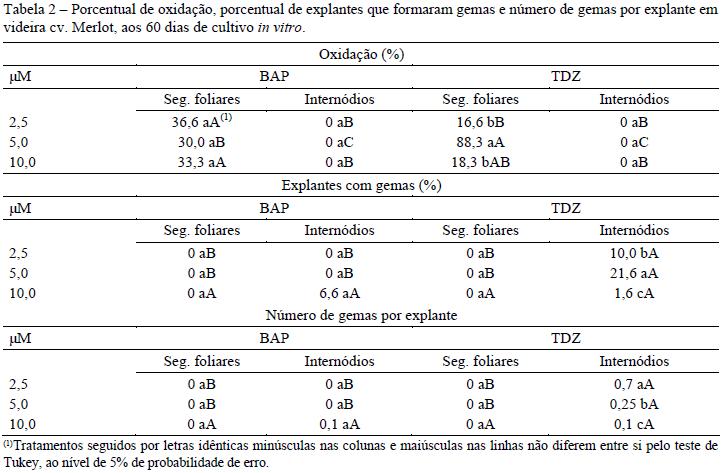The objective of this work was study the induction of organogenesis on leaf segments and internodes of grapevine cv. Merlot using different types and concentrations of cytokinins. MS half strength culture medium supplemented with 1 µM naftalenoacetic acid (NAA) was used. The treatments consisted of the concentrations of 2.5; 5.0 or 10 µM 6-benzilaminopurine (BAP) or thydiazuron (TDZ). The percentage of buds, callus, oxidation and roots as well as the number of roots and buds were evaluated. After 60 days of in vitro culture it was observed that the concentrations of 2.5-10 µM BAP or TDZ oxidize leaf segments and do not induce oxidation in the internodes. The level of 5 µM TDZ promote the largest formation of buds from internodes and leaf segments do not have capacity to form buds at the levels of 2,5-10 µM BAP or TDZ. The use of BAP at the concentrations of 2.5 and 5 µM promote high rooting percentage of internodes. TDZ at the level of 2.5 µM promotes high rate of callus formation in internodes. Internodes presented larger organogenic capacity than leaf segments.
Vitis vinifera; in vitro rooting; in vitro morphogenesis; phenolic oxidation; cytokinin




